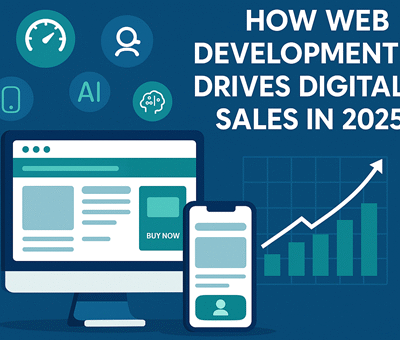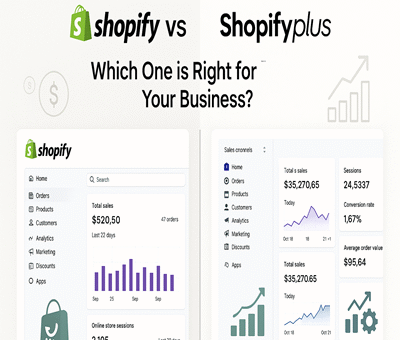In the fast-paced digital economy of 2025, web development has become one of the most critical drivers of digital sales. With online customer journeys growing more sophisticated and expectations higher than ever, a business’s website is no longer just a digital presence — it’s the engine of revenue growth. From mobile-first experiences to AI-powered personalization, modern web development is reshaping the way businesses connect with consumers.
Let’s explore how cutting-edge web development practices are helping companies skyrocket their digital sales in 2025.
1. Faster Load Times = Higher Conversions
Website speed remains one of the most decisive factors for conversions. In 2025, users expect pages to load in under two seconds, and search engines reward fast-loading sites with better visibility.
Web developers are optimizing performance through:
-
Lightweight frameworks like Next.js and Astro
-
Smarter image compression and lazy loading
-
Serverless architecture and edge computing
A delay of just one second can reduce conversions by up to 20%, making performance optimization a must-have for digital sales success.
2. Mobile-First, Always
With over 75% of online purchases now happening on mobile, responsive, mobile-first design is no longer optional.
Modern web development uses:
-
Scalable vector graphics (SVGs)
-
Touch-friendly navigation
-
Progressive Web Apps (PWAs)
These improvements ensure seamless mobile experiences that encourage browsing, engagement, and buying — anytime, anywhere.
3. Personalized Experiences Powered by AI
AI and machine learning are powering hyper-personalized websites in 2025. Web development teams are now integrating intelligent tools that dynamically adapt content, product recommendations, and offers based on user behavior.
For example:
-
E-commerce sites suggest items based on browsing history
-
SaaS platforms show tailored pricing or onboarding flows
-
Retail sites use geolocation to adjust promotions
This level of personalization drives deeper engagement and boosts sales dramatically.
4. Headless Commerce and Seamless Integrations
Headless CMS and commerce solutions give developers the freedom to craft blazing-fast, customized front-ends, while still integrating with powerful back-end systems.
In 2025, headless setups allow:
-
Real-time product updates across devices
-
Omnichannel shopping experiences
-
Easy integration with CRMs, ERPs, and marketing tools
These modular, API-first architectures are turning websites into fully optimized digital sales machines.
5. Trust-Building UX and Accessibility
Sales don’t happen without trust. Web developers are focusing on accessible, inclusive, and ethical design principles that boost credibility and user satisfaction.
Key strategies include:
-
ADA-compliant designs
-
Transparent data handling and privacy features
-
Intuitive navigation and clear CTAs
When users feel safe and understood, they’re more likely to convert — and come back.
6. Real-Time Analytics and Conversion Optimization
In 2025, websites are not static brochures. They are data-driven platforms, continuously evolving based on user behavior. Developers are integrating real-time analytics tools and A/B testing frameworks directly into websites.
This allows businesses to:
-
Adjust layouts or offers on the fly
-
Identify drop-off points in the sales funnel
-
Personalize experiences even more deeply
Constant iteration is the secret weapon behind high-performing websites.
Final Thoughts
Web development in 2025 is not just about building beautiful websites — it’s about engineering revenue-generating digital experiences. From performance and personalization to AI and accessibility, developers now play a direct role in driving sales and business growth.
If you’re not investing in modern web development, you’re likely leaving money on the table.


